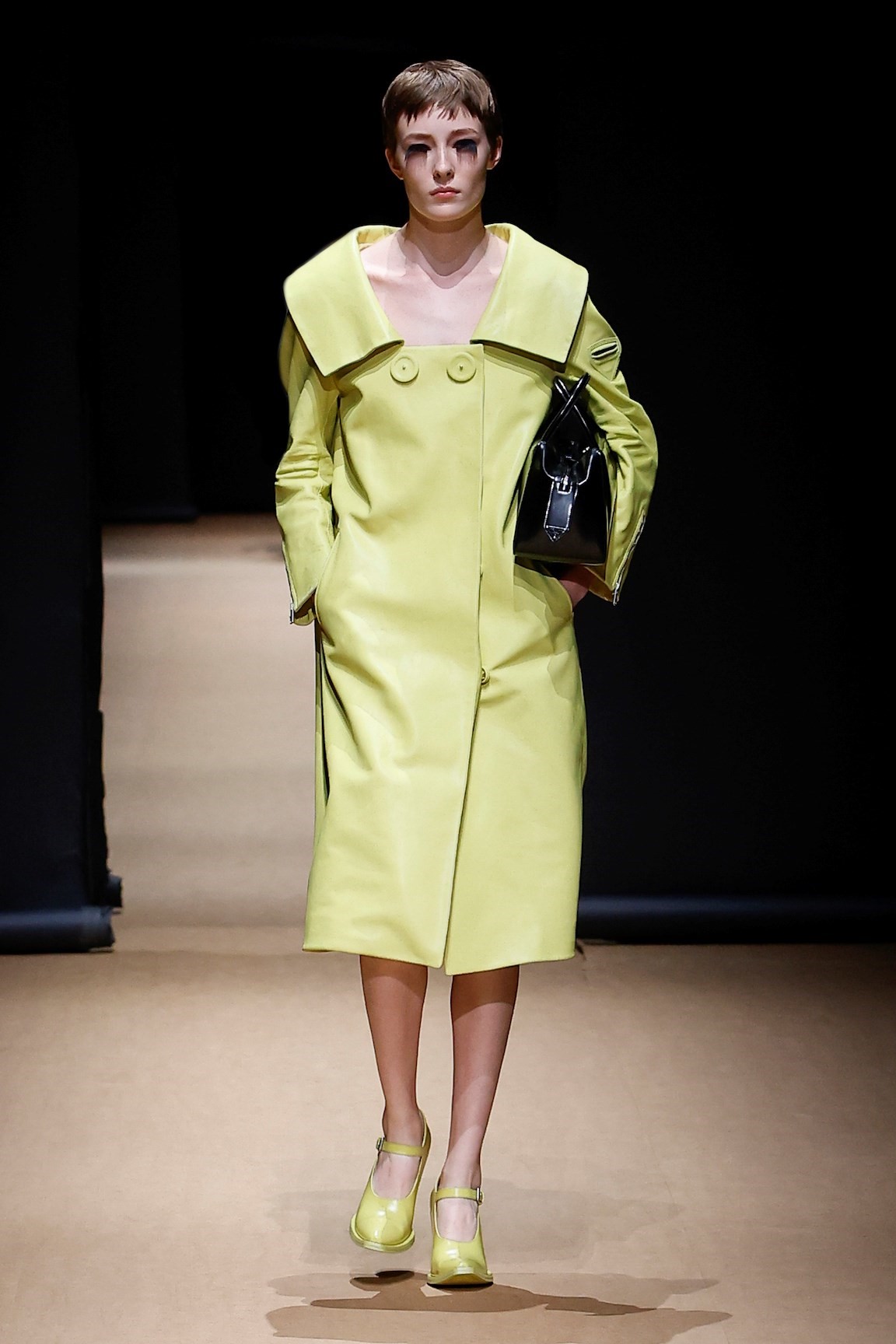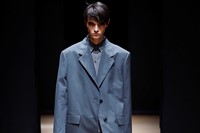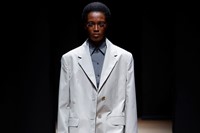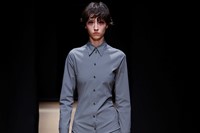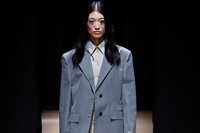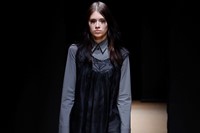Miuccia Prada and Raf Simons are fascinated by the notion of creative conversations. Not only their own – although, two years in, it’s proving one of fashion’s richest and most fruitful – but also, it seems, engaging others in their discourse. For Spring/Summer 2023, they pulled in the Danish auteur Nicolas Winding Refn as a third wheel, so to speak. The director of the Pusher trilogy and Drive worked alongside the duo to conceive a physical and digital environment for their latest collection – including an installation as part of the show’s décor, conceived with Rem Koolhaas’s AMO (more collaboration) and erected in the vast space of the Deposito of the Fondazione Prada. The installation framed the crux of the work, a series of filmic shorts by Refn viewed through windows punched in black paper walls. If the audience peered into these portals, they saw fragments of different domestic scenes, parts of the lives of different women. The clothes would, later, seem familiar – but intriguingly they weren’t the focus.
“The collaboration with Nicolas Winding Refn has been creatively energising,” said Simons ahead of the show. “Although the collaboration is around the show rather than the collection, we have been inspired by the collaboration, by his perspective on Prada.” That perspective encompasses a few Prada obsessions – his intense but odd colour palette say (candy pink, bloodied red, an inky blue) – but the most compelling was the focus of those films, the glimpses they offered of the lives of women, something which has always fascinated Miuccia Prada and hence been embedded in the clothes that bear her name. It’s an idea she and Simons have explored together too. “Being inspired by history connects with the lives of the past,” she said about their last womenswear show – whose tiered skirts seemed created from memories of other garments. She continued, “you want to live again, to be inspired. And to learn from the lives of people.”
This collection was the most wide-ranging proposal from Prada and Simons’ collaboration to date – roaming through ideas and ideals of women, notions of wardrobes, fragments of lives lived. “This one is filled with different views,” reasoned Simons, of a show that shifted from strict tailoring to unabashed feminine dresses, from strict suiting to filmy negligees. Yet there was always something askant, askew and intriguingly off about each piece – if the rifts in the walls invited us to look at Refn’s work, these garments demanded our touch and feel, elicited an urge to get inside them to figure them out. The collection’s title was Touch of Crude, and it was expressed through the raw and impulsive, through roughly-ripped slits and hems, through exposed underwear and creases and couture duchesse satins that seemed mauled and twisted, gestures of error. They were, Miuccia Prada said, the traces of living.
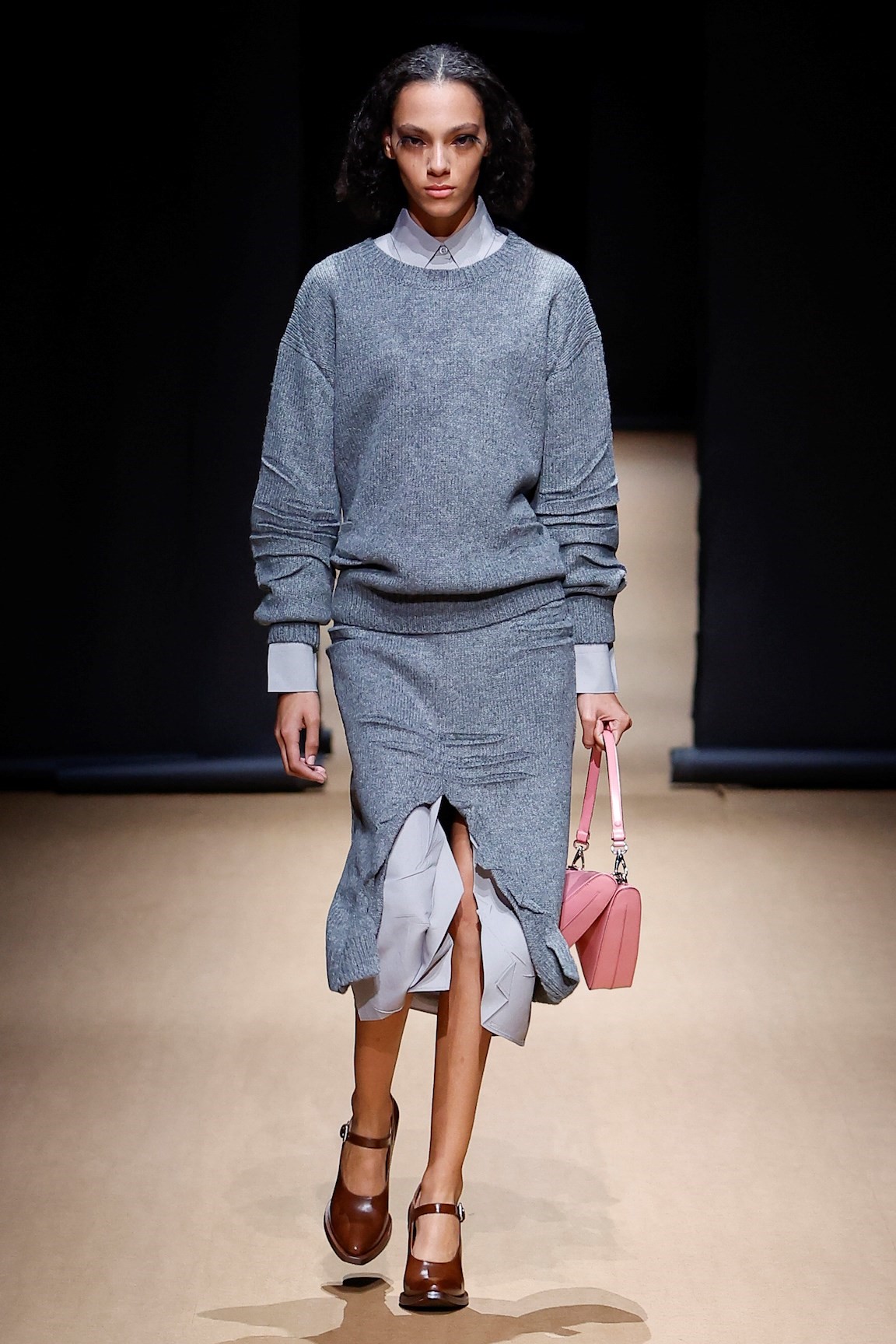
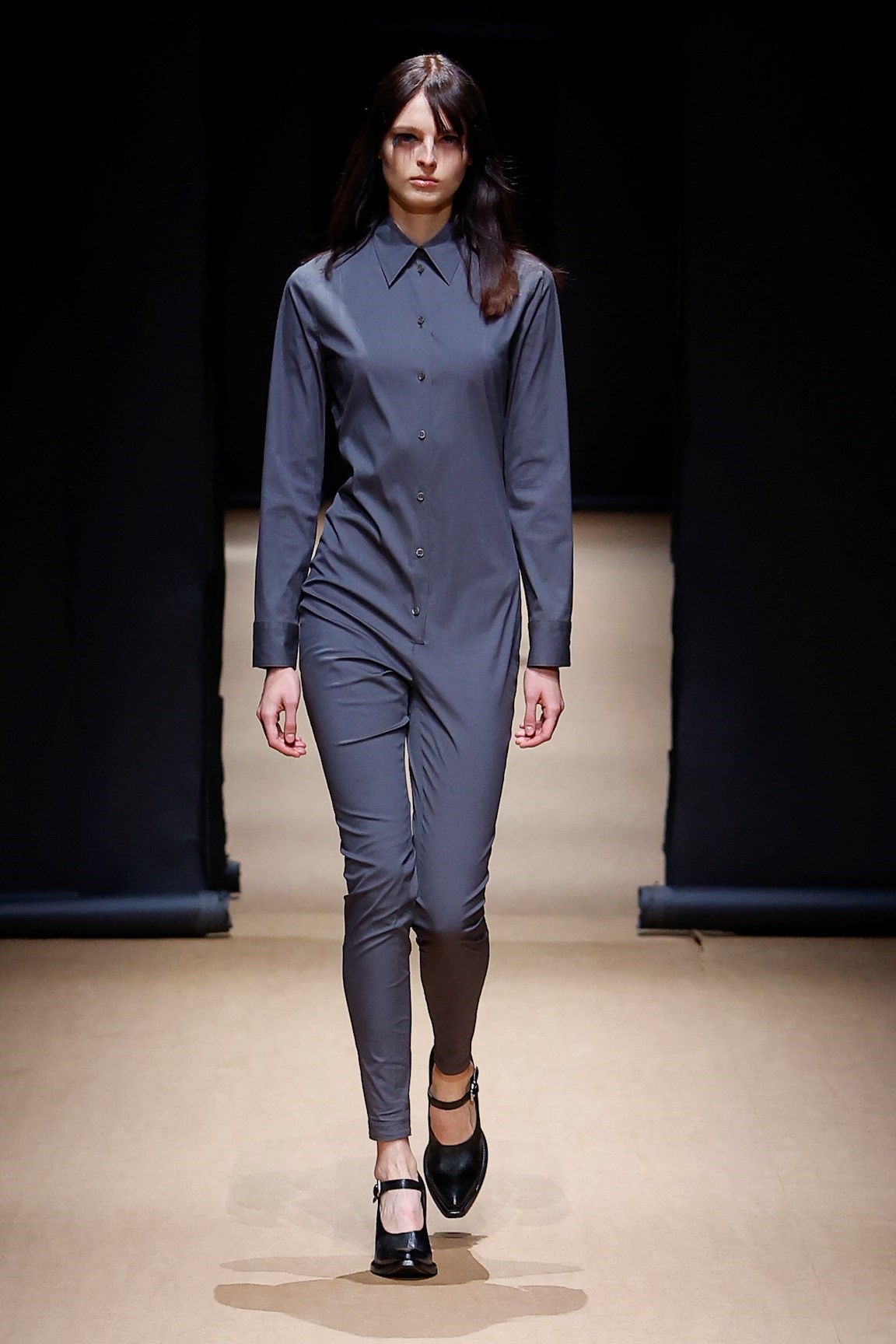
But what life would you choose? This Prada collection offered myriad, from the industrial greys of a ‘Prada Uniform’ of poplin shirts tugged out into streamlined bodysuits worn under tailored jackets, through Hausfrau frilled bed-jackets and lingerie dresses in swaying crinkling organzas inlaid with lace, to chewed-up shetland knits with slashed skirts and crumpled sleeves and then an incongruous array of elegant evening dresses, corsages tucked into their bodices. Different women, or perhaps facets of the same, the ever-changing identity of each modern woman – whose rights and liberties continue to be challenged in various corners of the globe. Prada’s message? Freedom – choose to be who you like, and dress accordingly.
There was a dynamic energy to this Prada show, a throbbing and pulsing urgency to the clothes on show. Maybe that was because so many seemed creased, crumpled and torn in some sort of frenzy so, rather than reflecting a precise, conceptual rigorous, they instead embodied a spontaneity that meant, perhaps, your nightgown got fused with your trench-coat when you dressed in haste, or you shredded your silken dress on the way out the door. Those ‘silks’ incidentally, were actually paper – “the most simple, modest material,” stated Miuccia Prada, and they were also sustainable, of course. Printed with blocks of colours or sweet, naïve patterns, they were striking and seductive in their absolute simplicity. They may have seemed fragile but they, and the rest of this meaty, multifaceted show, punched well above their weight. Rich and filled with ideas, it will doubtless influence designers at every level. Expect next winter to be filled with creases and crumples ripped-off from this – although, perhaps, without Prada’s level of meaning, passion and soul.
